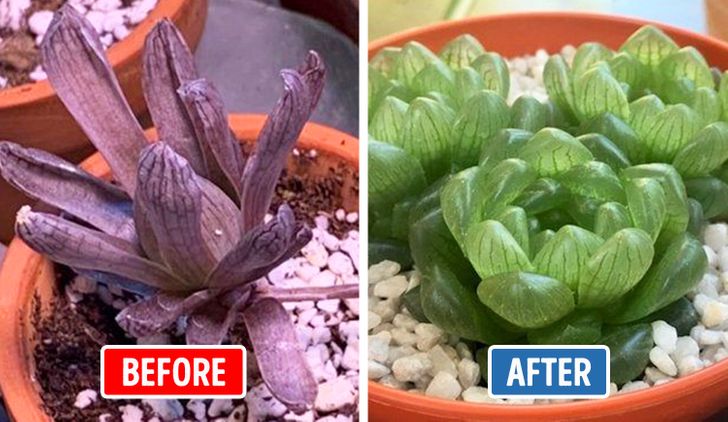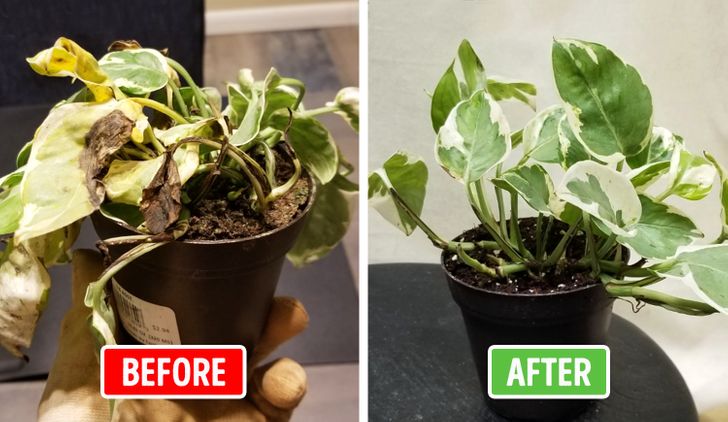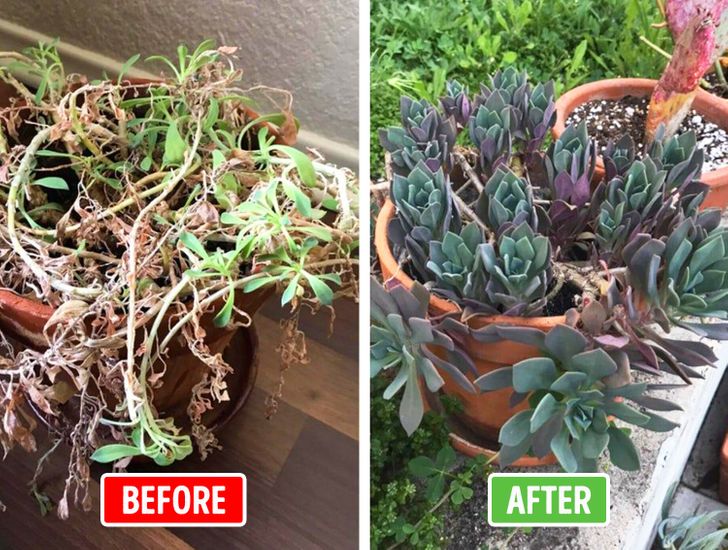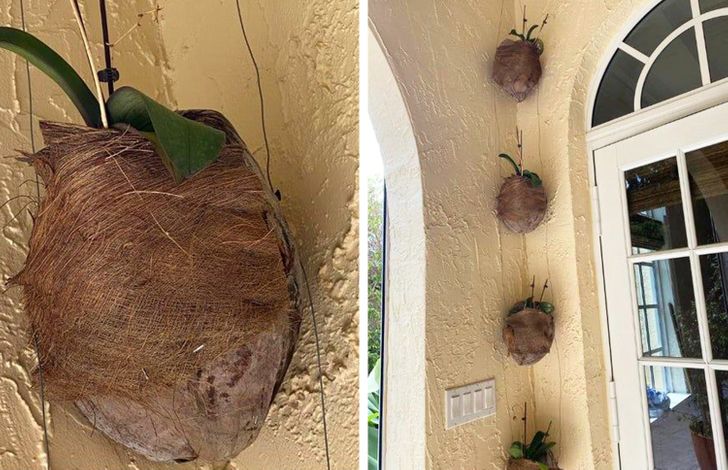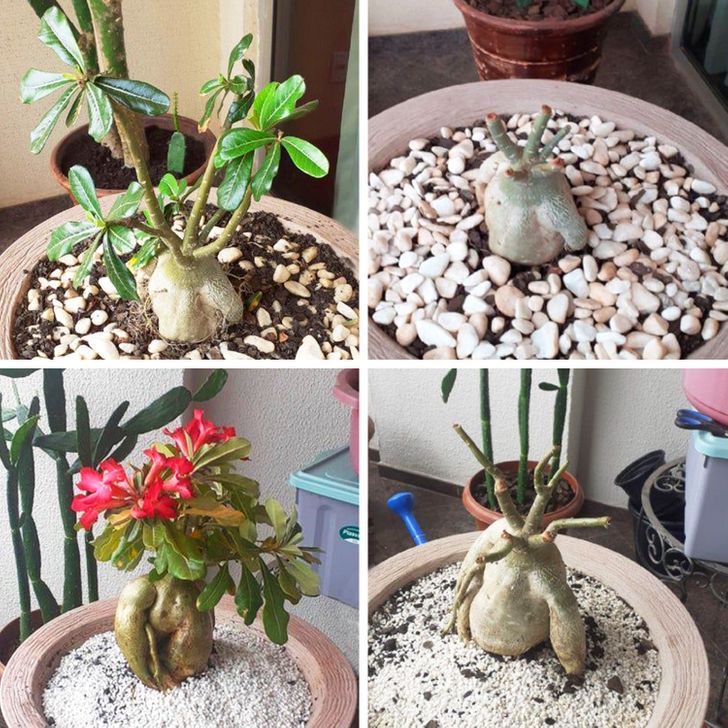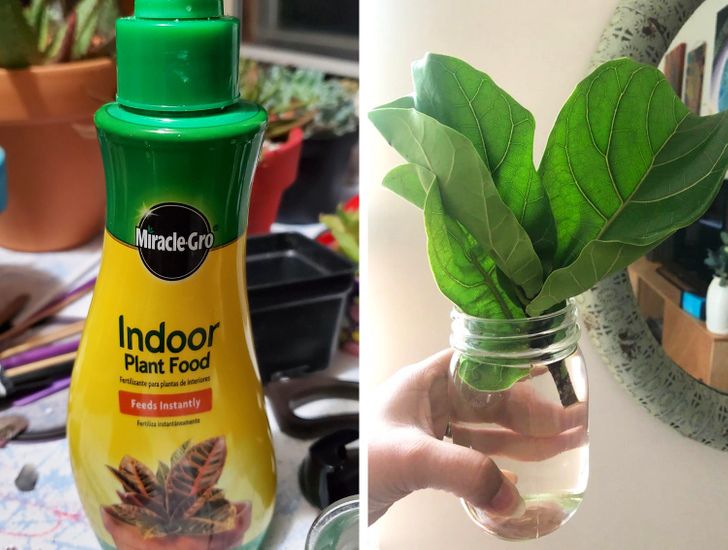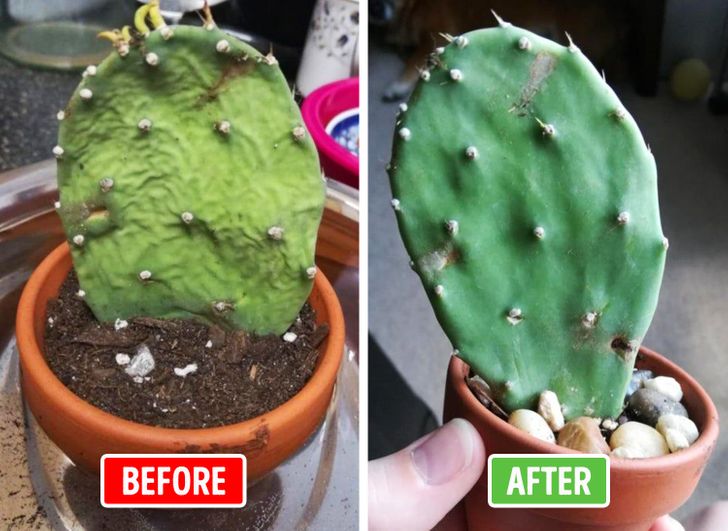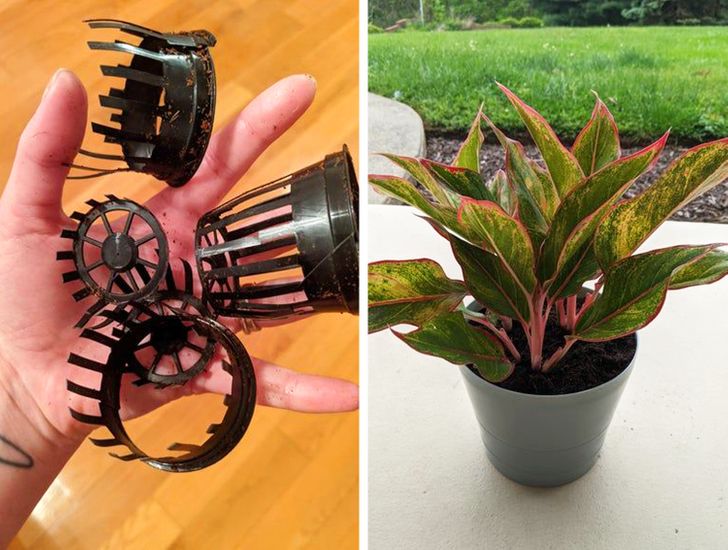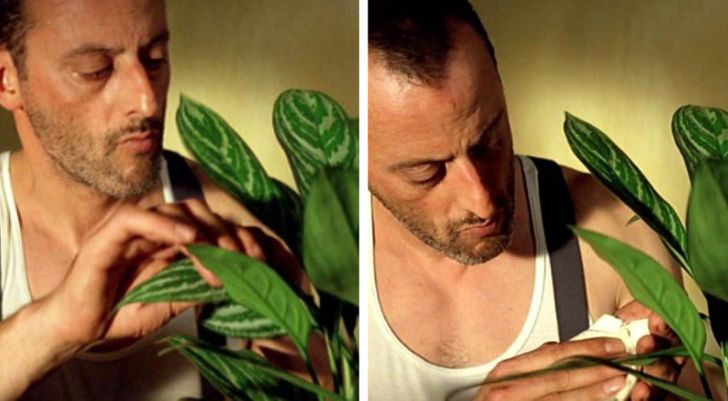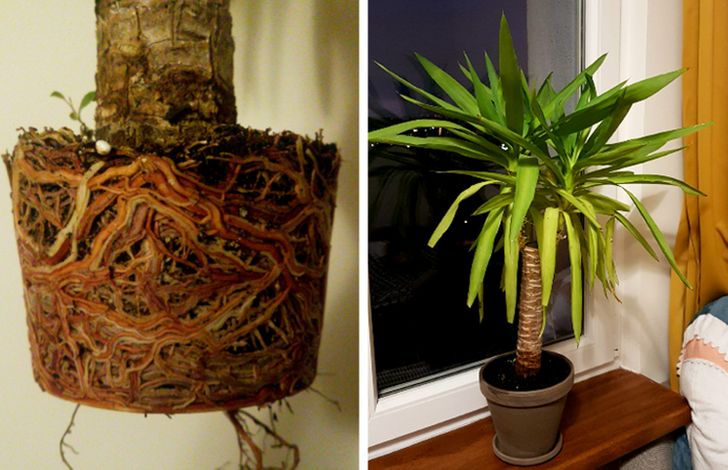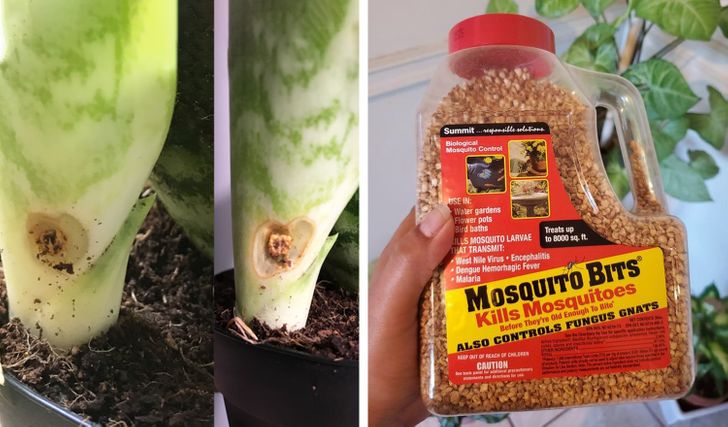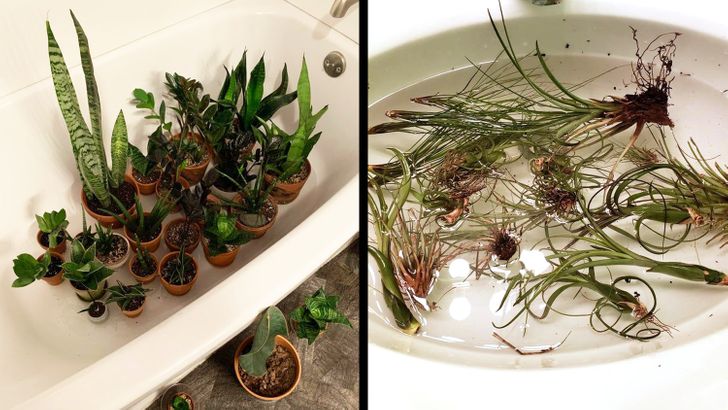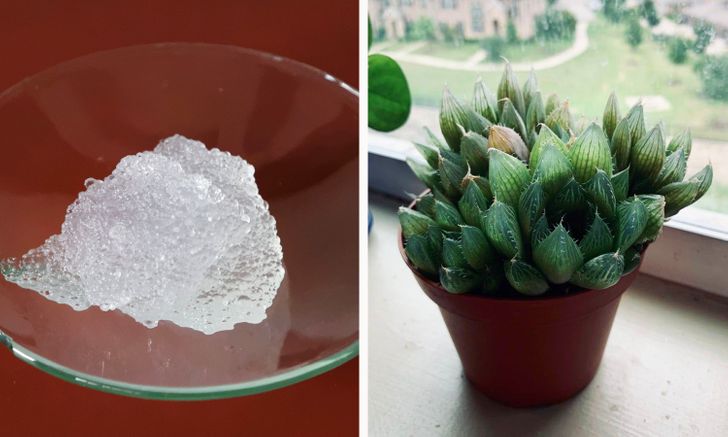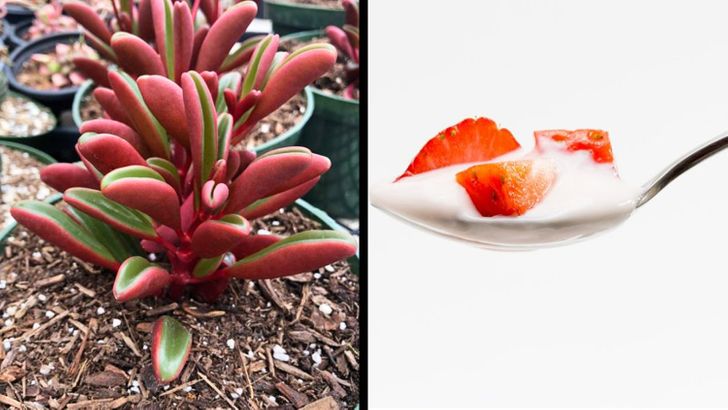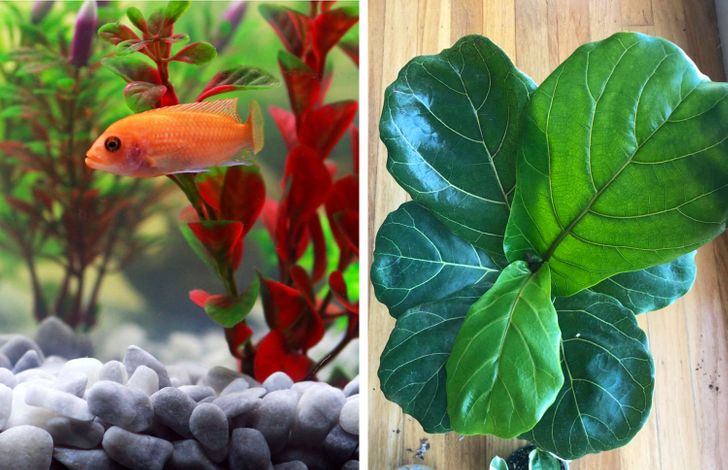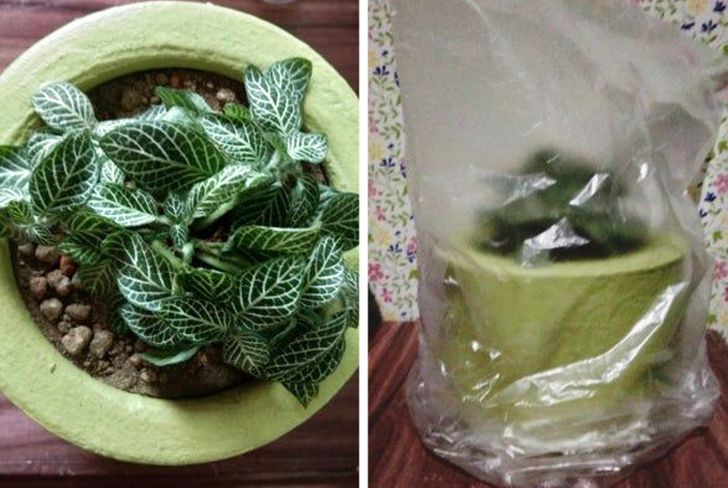Nice advice guys, I will save it. Almost all my plants die in no time and it's such a shame :(
15+ Ways to Save a “Dead” Plant, Even If You Don’t Have a Green Thumb
Some people have special bonds with their houseplants, just like Leon and Mathilda from Luc Besson’s movie. And it’s so disappointing when one day, we find our green pals taking their last breath, with their leaves helplessly shriveled and dried up. But the good news here is that you shouldn’t rush to mourn over your untimely deceased plant, as there are some ways to jump-start these poor things and make them bloom in glory again.
We at Bright Side love to hunt for tips that help our readers fix even the most desperate situations, and this time, we invite you to see how to resurrect your potted treasures.
1. Switch decorative or metal pots out for “healthier” ones.
If your plant is hardly breathing, it may be because you’ve chosen beauty over practicality and have put it into the wrong kind of pot. Your plant doesn’t really care if its “outfit” matches the pattern of your new curtains. Ultimately, they need a healthy environment to grow and bloom in. So if your plant is in a metal pot or in a nice decorative one without drainage holes, you really need to free it from this captivity. Metal planters keep heat inside and the roots of your poor plant are literally “cooking” in this “frying pan.” Ceramic pots with a single drainage hole or with no drainage holes at all will make water stay inside the soil, provoking unhealthy humidity around the roots.
2. Treat overcrowded roots manually, loosening and separating them gently.
When a plant looks like the one in the picture on the left, it’s time to repot it to give it more space. Before repotting, make sure you clean up the roots and untwist them so that they can absorb water and nutrients more efficiently. Do it carefully, like unwinding the fragile rope, in order to not break the roots and give them more space to breathe.
3. Use only filtered water on your plants.
Despite the opinion that tap water is filtered, it still has some levels of chlorine and other chemicals that may be the last bullet for your plant. Let the water sit for 24 hours before watering the plant. Distilled water or rainwater is also good for your plant, experts say, as both are slightly acidic and naturally flush away all the chemicals and salts that have already accumulated in the soil because of the previous usage of tap water. You can either collect rainwater in a reservoir or put the plants outside to soak in some moisture while it’s raining.
4. Consider organic pots for creating a more natural environment for growth.
You can try moving your plants to pots made from coconut shells. Not only is this the best organic pot that can allow good drainage and prevent the roots from rotting, but it’ll supply your plant with zinc, copper, and iron naturally. While it’s too weak for chemical fertilizers, the natural “feeding” will literally hold it in this world.
5. Trim all the “dead” parts, but leave about 2 inches of stem above the surface.
Remove all dead or unattractive pieces left on the plant. This includes shriveled yellow or brown leaves that cannot be saved or stems without leaves at all. Cut the lifeless stem at a 45-degree angle, leaving as much living foliage as possible.
6. Consider only water-soluble fertilizers and water the plant with a small amount of the mixture.
Though it may seem that fertilizer can work wonders, it’s only partially true. What really matters, however, is the amount and proper application, especially for your weak, lifeless plants. The approach of “more is better” will absolutely kill your poor plant. To fertilize it, you’ll need to prepare a mixture of 1 teaspoon of fertilizer per 1 gallon of water — this is the most universal proportion that’s not harmful to houseplants.
7. Add light-colored drainage around the plant.
8. Check the pot for hidden cages and remove them.
If your plant is still in the original pot you bought it in, it’s recommended to check the pot for any plastic cages at the bottom, as they’re damaging for the roots and can likely be the main reason why your plant is now dying. You’ll need to either remove the cages from the pot or change the pot completely.
9. Get rid of pests with delicate washing.
Use a sponge or a cotton swab dipped in soapy water or rubbing alcohol to delicately wash the pests off your plant. If you use a special soap that’s for insects and pests, you’ll need to repeat the procedure a couple of times as anti-insect soaps take effect only until they dry out.
10. Take measures to not attract bad bugs.
To keep hungry bugs off of your precious green friends, you need to say “no” to using outdoor soil. Buy a soil mixture in the supermarket, as it’s sterile and will not be contaminated with unwelcome invaders. Immediately repot your plant into the healthy soil.
Since your plant is too weak, you need to ensure good drainage as well, as this prevents the roots from rot and ensures better resistance against insect invasion.
11. Deal with fungus spots and insects by using an oil spray or anti-mosquito remedies.
Just as it is for humans, fungus can be damaging for your plants’ health. If your plant has rotting spots over its thumb or closer to its roots, it’s time to declare war against this unwelcome “guest.” You can use either professional anti-fungus granules or apply a special horticultural oil, which will not contaminate your plant with deadly chemicals, but rather, will smother insects and fungus to death.
12. Arrange stem and root baths for your plants.
After a long time spent indoors, your plants deserve a real spa-day. Dry air and non-natural ventilation in your apartment can exhaust them. To revive them, you’ll need to put them into other conditions and give them a good cleaning and soaking. Put the plants in a bathtub and thoroughly wash them under a showerhead, paying close attention to both sides of the leaves. This way, you’ll wash any remaining pests from the leaves and will allow the water to take away harmful substances that have been accumulating in the soil.
13. Use diaper filling for soil drainage.
If the roots of your plant are prone to rot, the best way to keep the humidity balance is by using hydrogel (which can be bought in gardening shops). You can also use a baby diaper that’s been torn apart — just mix the contents with water until you get a gel texture. You should add it to the soil of your plant in equal proportions and your perfect self-draining soil will be ready. With this method, you don’t have to bother with root rot anymore.
14. Use yogurt as non-aggressive fertilizer.
Lactic acid bacteria can provide good nutrition for your plants. It’s a natural disease-killer and it also helps to keep the soil in optimal condition for your plant to feel at ease. You can “feed” your plant a couple of teaspoons of yogurt, adding it to the soil in order to enrich the plant’s base with organic acids and help your green friend to restore its vigor.
15. If you have an aquarium, use its water for drop-watering.
You’ve probably noticed how fast water plants grow in your aquarium. This is all because they’re constantly “fed” by organic and natural products that come to the water as the result of the life activity of your fish. As long as your tank isn’t filled with saltwater, you can use the aquarium water to irrigate your plants and enrich their soil so that it can naturally restore their vitality. This, however, won’t work if the water in your tank is salty, so be sure to take that into consideration when you practice this type of plant therapy.
16. Use a plastic bag to create an at-home greenhouse for your plant.
You can create a miniature greenhouse for your plant by putting it together with the pot into a clean plastic bag and putting it in some mild indirect light or artificial light. Make sure to water the plant before this and let the water drain well. The plastic will let your plant absorb the water which will evaporate, and you can be sure that no matter how busy you are on certain days of the month, your plant will not dry out again. This method also helps your plant to survive in conditions with dry air, like when your heater is on. Humidity is just as essential in this time of the year for your plant as it is for you and your health.
What tips do you have for giving a dry, rotten plant a second chance to enjoy a happy life? We’d love for you to share your plant reanimation experiences with us.
Comments
same here. Only cactuses can survive in my hands :D
I can't even take care of those properly ?
wow good
Related Reads
12 Celebrity Couples We Didn’t Realize Were Together

People Reveal the Most Disrespectful Things a Guest Has Ever Done in Their Home

12 Comics That Show How Fulfilling and Hard It Can Be to Raise a Teenager

21 Pairs of Celebrities Who Turned Out to Be the Same Age, Though It’s Hard to Believe

20+ Internet Users Shared Clever Ways to Use Things You Don’t Need Anymore

20 Times the Universe Threw a Real Show for an Unsuspecting Audience

20+ Things for People Who Think That Nothing Can Surprise Them

Zac Efron’s Appearance a Few Days Ago Leaves Fans Shocked and Worried

Miley Cyrus Causes a Stir by “Leaving Nothing to the Imagination” as She Wears an Extremely Revealing Dress

Sharon Stone, 65, Shares a Stunning Bikini Photo, But One Twist Completely Stole Her Thunder

Model Lost Entire Lips in Pitbull Attack, And She Reflects on Her Recovering Journey

An Artist Shows What Some of Disney’s Characters’ Lives Would Look Like Today

